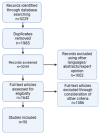Long COVID in Children and Adolescents: Mechanisms, Symptoms, and Long-Term Impact on Health-A Comprehensive Review
- PMID: 39860384
- PMCID: PMC11766386
- DOI: 10.3390/jcm14020378
Long COVID in Children and Adolescents: Mechanisms, Symptoms, and Long-Term Impact on Health-A Comprehensive Review
Abstract
Long COVID, also known as post-acute sequelae of SARS-CoV-2 infection (PASC), is increasingly recognized as a condition affecting not only adults but also children and adolescents. While children often experience milder acute COVID-19 symptoms compared to adults, some develop persistent physical, psychological, and neurological symptoms lasting for weeks or months after initial infection. The most commonly reported symptoms include debilitating fatigue, respiratory issues, headaches, muscle pain, gastrointestinal disturbances, and cognitive difficulties, which significantly impact daily activities, schooling, and social interactions. Additionally, many children with long COVID experience psychological symptoms, such as anxiety, depression, mood swings, and irritability, likely exacerbated by prolonged illness and lifestyle disruptions. Risk factors for long COVID in children include pre-existing health conditions such as asthma, obesity, and neurological disorders, with adolescents and females seemingly more affected. Hypothesized mechanisms underlying long COVID include chronic immune dysregulation, persistent viral particles stimulating inflammation, autonomic nervous system dysfunction, and mitochondrial impairment, which may collectively contribute to the variety of observed symptoms. Long-term outcomes remain uncertain; however, long COVID can lead to school absenteeism, social withdrawal, and psychological distress, potentially affecting cognitive development. Severe cases may develop chronic conditions such as postural orthostatic tachycardia syndrome (POTS) and reduced exercise tolerance. This review synthesizes the existing literature on long COVID in children, examining its prevalence, symptomatology, risk factors, and potential mechanisms, with an emphasis on the need for further clinical studies. While existing research largely relies on surveys and self-reported data, clinical assessments are essential to accurately characterize long COVID in pediatric populations and to guide effective management strategies.
Keywords: adolescents; autonomic dysfunction; children; chronic COVID-19 symptoms; cognitive impairment; immune dysregulation; long COVID; mitochondrial impairment; pediatric long COVID; post-acute sequelae of SARS-CoV-2 infection; psychological impact.
Conflict of interest statement
The authors declare no conflicts of interest.
Figures
Similar articles
-
Long COVID in pediatrics-epidemiology, diagnosis, and management.Eur J Pediatr. 2024 Apr;183(4):1543-1553. doi: 10.1007/s00431-023-05360-y. Epub 2024 Jan 27. Eur J Pediatr. 2024. PMID: 38279014 Free PMC article. Review.
-
The impact of the COVID-19 pandemic on children and young people.Psychiatriki. 2023 Dec 29;34(4):265-268. doi: 10.22365/jpsych.2023.024. Epub 2023 Nov 14. Psychiatriki. 2023. PMID: 37982248 English, Greek, Modern.
-
Pathogenic mechanisms of post-acute sequelae of SARS-CoV-2 infection (PASC).Elife. 2023 Mar 22;12:e86002. doi: 10.7554/eLife.86002. Elife. 2023. PMID: 36947108 Free PMC article. Review.
-
Persistent symptoms and clinical findings in adults with post-acute sequelae of COVID-19/post-COVID-19 syndrome in the second year after acute infection: A population-based, nested case-control study.PLoS Med. 2025 Jan 23;22(1):e1004511. doi: 10.1371/journal.pmed.1004511. eCollection 2025 Jan. PLoS Med. 2025. PMID: 39847575 Free PMC article.
-
Postural orthostatic tachycardia syndrome as a sequela of COVID-19.Heart Rhythm. 2022 Nov;19(11):1880-1889. doi: 10.1016/j.hrthm.2022.07.014. Epub 2022 Jul 16. Heart Rhythm. 2022. PMID: 35853576 Free PMC article. Review.
Cited by
-
Symptoms of long COVID in children and adolescents: a scoping review.Rev Esc Enferm USP. 2025 Aug 4;59:e20240435. doi: 10.1590/1980-220X-REEUSP-2024-0435en. eCollection 2025. Rev Esc Enferm USP. 2025. PMID: 40762988 Free PMC article.
-
Association of School Social Status with COVID-19 Pandemic-Related Changes and Post-Pandemic Rebounds of Children's Physical Fitness.Sports Med Open. 2025 Apr 23;11(1):41. doi: 10.1186/s40798-025-00838-5. Sports Med Open. 2025. PMID: 40268818 Free PMC article.
References
-
- National Center for Immunization and Respiratory Diseases (NCIRD) of Viral Diseases. Centers for Disease Control and Prevention . Long COVID or Post-COVID Conditions. Centers for Disease Control and Prevention; Atlanta, GA, USA: 2023.
-
- World Health Organization . Post COVID-19 Condition (Long COVID) World Health Organization; Geneva, Switzerland: 2022.
Publication types
LinkOut - more resources
Full Text Sources
Miscellaneous



